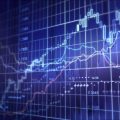In the complex ballet of the forex market, two pivotal figures set the pace – the bid and ask prices. These are the dual pillars that form the foundation of the currency exchange mechanism. Grasping these concepts is vital for any trader aiming to proficiently maneuver through the foreign exchange market. This is akin to understanding the diverse price points in stock or options trading, which are integral to making informed trading choices.
Exploring the Bid Price in Forex
In the realm of forex, the bid price is the rate at which the market (or your digital broker) agrees to purchase a specific currency duo. It symbolizes the peak price that purchasers are prepared to offer for a currency, frequently labeled as the market or selling price. Take, for example, the EUR/USD pair with a bid price of 1.1200. This indicates that forex traders are ready to spend a maximum of 1.1200 US dollars for one euro. When you’re in the market to sell currencies, your primary focus should be the bid price. This is the rate quoted by an online broker and the amount you’ll receive upon selling the currency pair, usually the lower of the two prices. The bid price generally sits below the ask price, leading us to explore the latter.
Delving into the Ask Price
On the flip side, the ask price is the minimum rate at which the market (or your digital broker) is prepared to part with a currency pair. It’s the least amount sellers demand in return for their currency, often termed the lowest or buying price. Continuing with the EUR/USD example, an ask price of 1.1205 implies that the minimum a seller will accept for one euro is 1.1205 US dollars. For those in the market to buy a currency pair, the ask price is the key number. It’s the rate you’ll pay when purchasing the currency pair. The ask price invariably exceeds the bid price, which introduces us to the concept of the bid-ask spread.
The Significance of the Bid-Ask Spread
The bid-ask spread is the gap between the bid and ask rates. It’s a pivotal element in forex trading as it signifies the expense involved in currency transactions. A slimmer spread denotes a lower trading cost, while a broader spread points to a higher expense, often described as high spreads. For instance, if the EUR/USD’s bid rate is 1.1200 and its ask rate is 1.1205, the spread stands at 5 pips, a calculation traders can perform with ease. This spread is the primary revenue source for brokers and serves as an indicator of a currency pair’s liquidity. Frequently traded pairs, such as the EUR/USD or those involving the Japanese yen, usually feature slimmer spreads, rendering them more appealing to traders. In contrast, less liquid currency pairs might display wider spreads, potentially elevating the trading cost.
The Function of a Digital Brokerage
A digital brokerage serves as a link between individual traders and the foreign exchange market. They grant access to a trading interface where both buying and selling prices are displayed, mirroring the ongoing exchange rates. When choosing a digital broker, one must pay attention to the spreads they present, as these will have a direct effect on your trading profit possibilities. A trustworthy digital broker will offer competitive spreads, a variety of currency pairs, and a secure environment for trading, in contrast to the less advantageous rates often found at airport exchange counters.
The Impact of Buying and Selling Prices on Forex Trade Choices
Buying and selling prices in forex aren’t merely figures on a display; they represent the heartbeat of the forex market, influencing every trading decision. A trader’s approach is based on these prices, as they set the parameters for entering and exiting trades. The buying price establishes the groundwork for selling orders, showing the maximum price the market is ready to pay for a currency pair. On the flip side, the selling price serves as a reference for buying orders, indicating the minimum price at which the market agrees to sell. Traders need to continuously monitor these prices to understand market mood and liquidity, which can hint at upcoming price shifts. A trader aiming to benefit from positive market sentiment will keep a close eye on the selling price, as it signals the trend and potential increase in the currency’s value.
Understanding Base and Counter Currencies in Relation to Buying and Selling Prices
In forex trading, each currency pair is made up of a base currency and a counter currency. The buying and selling prices are always expressed in the counter currency, offering clear insight into the base currency’s valuation. For example, in the EUR/USD pair, the euro is the base currency, and the US dollar is the counter currency. If the buying and selling prices are 1.1200/1.1205, it implies that traders are prepared to purchase euros at 1.1200 US dollars and sell them at 1.1205 US dollars. Grasping this concept is vital as it influences traders’ interpretation of the market and their decisions to buy or sell a currency pair, depending on their forecasts of future market trends.
Exploring the Application of Bid and Ask Prices through Various Examples
Let’s delve into several examples to demonstrate how bid and ask prices are applied:
1. Positioning for a Rise. A trader predicts the euro’s strengthening against the US dollar. The present ask price for EUR/USD stands at 1.1205. Purchasing euros at this rate, the trader aims to offload them at a more elevated price later. Should the ask price increase to 1.1250, the trader has the opportunity to sell the euros at this updated ask price, thereby realizing a gain.
2. Positioning for a Decline. In contrast, if the trader speculates that the euro will depreciate, they would consider the bid price, currently at 1.1200. Here, they can dispose of euros at this rate, with the intention of repurchasing them at a reduced price. A decrease in the bid price to 1.1150 allows the trader to repurchase the euros at this diminished bid price, earning a profit from the difference.
3. Implementing Stop Losses and Profit Targets. A trader may place a stop-loss order at a predetermined bid price to curtail potential losses in a long position, or at an ask price for a short position. Likewise, profit-target orders are established at an ask price for long positions or a bid price for short positions to lock in earnings. In these instances, the trader’s choices are significantly shaped by the bid and ask prices offered by their online broker, forming the cornerstone of their trading strategy development and implementation.
Grasping bid and ask prices is essential in online broker trading, as these figures are pivotal in determining trade execution prices. Comprehending these prices enables traders to more accurately place orders, manage risks, and understand trading costs, including spreads and possible slippage.
In-Depth Insights Interplay Between Bid/Ask Prices and Market Fluidity
The bid/ask spread mirrors the liquidity of a currency pair. Narrower spreads usually suggest a market with high liquidity, allowing substantial volumes to be traded without markedly affecting the price. Conversely, broader spreads might signal reduced liquidity and heightened risk. Bid and Ask Prices in Various Forex Market Types In spot forex markets, transactions occur at the current bid and ask prices. In contrast, forward and futures forex markets set prices based on an agreement to trade at a future date, with the price established presently.
Impact of Economic Events on Forex Trading’s Bid and Ask Prices
Economic occurrences can trigger volatility, leading to expanded spreads as market makers shield themselves from uncertainty. Traders need to stay abreast of events like central bank declarations, economic data releases, and geopolitical happenings that can sway currency values.
Conclusion
A thorough understanding of bid and ask prices is crucial for effective forex trading. These prices are the foundation of every transaction and are vital for informed decision-making. Online brokers are instrumental in equipping traders with the necessary tools and insights to comprehend and utilize forex quotes. As the forex market evolves, the symbiotic relationship between traders and their brokers continues to be a key element of trading strategy and execution.






